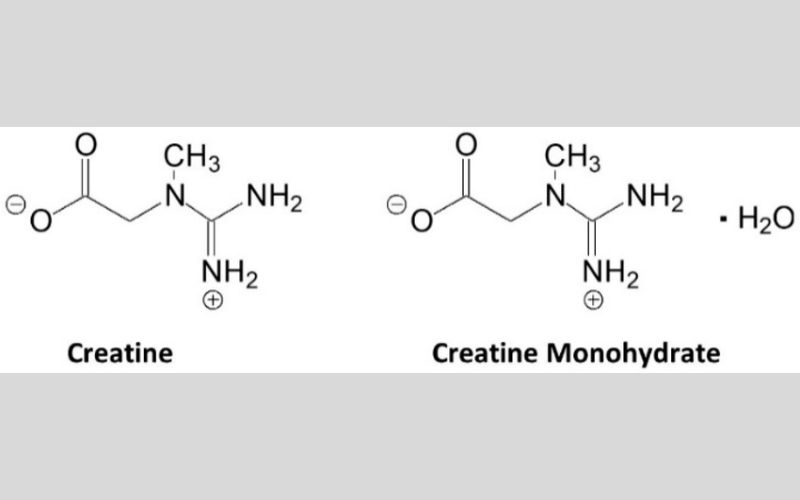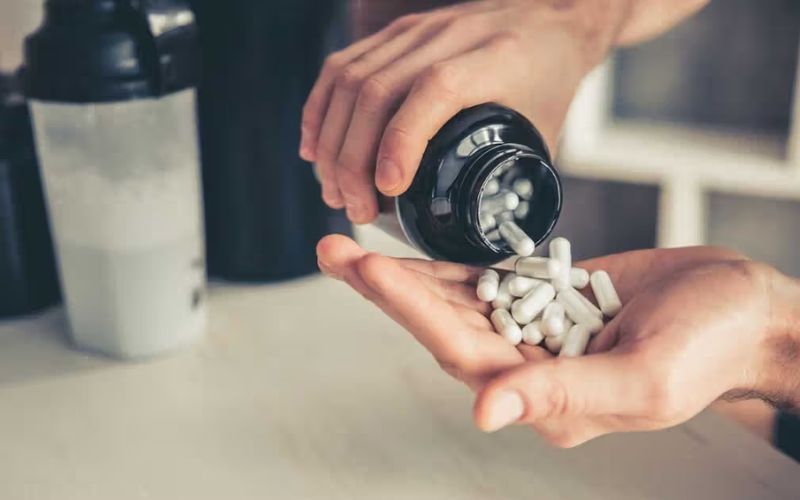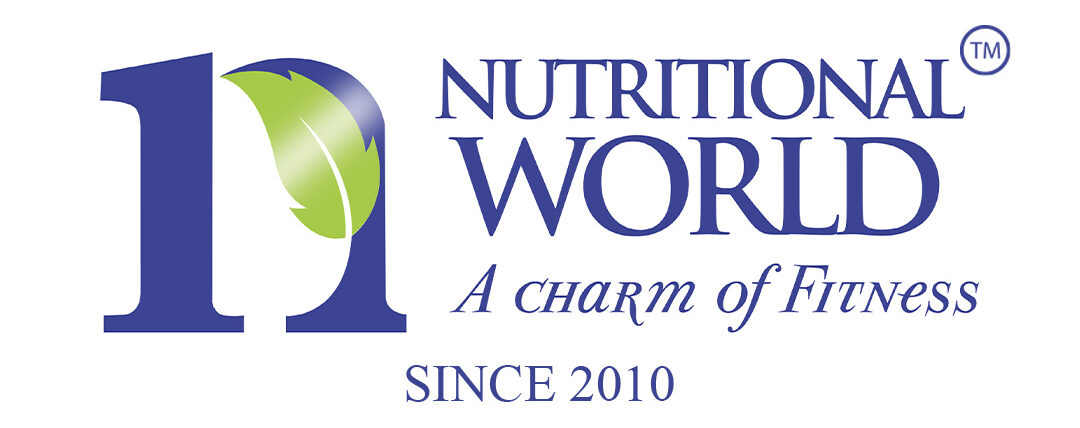In the fitness and bodybuilding world, the quest for enhanced performance and rapid recovery has led to the widespread adoption of various supplements. Among these, creatine monohydrate and protein shakes have emerged as staples.
But what if you could combine these two powerhouses? This article delves into the science, benefits, and best practices for mixing creatine monohydrate with protein shakes to maximize your fitness results. By understanding how these supplements work together, you can support improved muscle growth, sustained energy levels, and better nutrient absorption.
Many athletes use this combination to simplify their routine, enhance consistency, and experience noticeable strength gains over time, making it a convenient and highly effective strategy for daily training.
Table of Contents
Creatine and Protein Shakes
For decades, protein shakes have been the go-to for anyone looking to boost muscle repair and growth. Easy to prepare and quick to digest, they provide a concentrated dose of protein, which is crucial for muscle recovery post-exercise.
On the other hand, creatine monohydrate has earned its reputation for enhancing strength, power, and performance. Found naturally in small amounts in certain foods and synthesized in the human body, creatine plays a pivotal role in the production of ATP (adenosine triphosphate)—the primary energy carrier in cells.
When these two supplements are combined, they create a synergy that can amplify the benefits of each, making them a favorite among fitness enthusiasts and professionals alike.
The Science Behind Creatine Monohydrate

Creatine is stored in the muscles as phosphocreatine, which acts as a reserve to rapidly produce ATP during high-intensity, short-duration exercises like sprinting or heavy lifting. This extra energy source allows for increased performance in activities that demand bursts of energy.
Supplementing with creatine monohydrate increases the phosphocreatine stores in muscles, leading to enhanced ATP regeneration. This means you can push harder, lift heavier, and recover faster, all of which contribute to improved muscle mass and strength gains over time.
The monohydrate form of creatine is the most researched and proven variant, known for its high bioavailability and effectiveness. It’s no surprise that athletes and bodybuilders across the globe swear by its ability to deliver consistent results.
Benefits of Combining Creatine with Protein Shakes
While both creatine and protein shakes offer individual benefits, their combination can significantly elevate your fitness game. Here’s how:
1. Enhanced Muscle Recovery and Growth
Protein shakes are rich in amino acids, the building blocks of muscle tissue. Post-workout, your muscles are in a state of repair, and consuming protein helps kick start this process.
Creatine complements this by drawing water into muscle cells, promoting cellular swelling and creating an environment that facilitates muscle growth and repair. Together, they accelerate recovery, reduce muscle soreness, and support hypertrophy (muscle growth).
2. Improved Strength and Performance
Creatine enhances your ability to perform high-intensity exercises by replenishing ATP stores quickly. When taken with a protein shake, which may also contain carbohydrates, the insulin spike from the carbs can aid in creatine uptake by the muscles. This results in more pronounced improvements in strength, endurance, and overall workout performance.
3. Convenience and Efficiency
Mixing creatine into your protein shake simplifies your supplement routine. Instead of remembering to take multiple supplements at different times, you can streamline your intake, ensuring you get the necessary nutrients in one go. This not only saves time but also enhances the likelihood of consistent supplementation.
4. Hydration and Muscle Volumization
Creatine helps in hydrating muscle cells, which not only supports muscle function but also gives muscles a fuller appearance. Protein shakes, particularly those mixed with water or milk, further contribute to your hydration levels post-workout. This combination ensures that your muscles are well-hydrated, aiding in performance and recovery.
Optimal Timing and Dosage
One of the most common questions surrounding creatine supplementation is about timing. Should you take it before, during, or after your workout? While there’s no definitive answer, post-workout consumption of creatine with a protein shake offers several advantages.
Timing
Post-workout is an optimal time to consume this mix because your muscles are primed to absorb nutrients after the stress of exercise. This is often referred to as the “anabolic window,” where nutrient uptake is maximized. By taking creatine and protein together during this period, you provide your body with the tools it needs for recovery and growth.
Dosage
For creatine, the standard dose is 3-5 grams per day. This can be adjusted depending on your body weight and training intensity. Most protein shakes typically contain around 20-30 grams of protein per serving, which is ideal for muscle recovery. Simply adding your creatine dose to your shake ensures you’re getting everything you need in a single, convenient serving.
Creatine and Protein: Benefits Beyond Muscle Building

While creatine and protein are widely known for their roles in muscle growth and recovery, recent research suggests their benefits extend far beyond the gym. This makes them valuable not only for athletes but also for individuals seeking overall health improvements.
Cognitive Enhancements
Emerging studies indicate that creatine supplementation may support brain health by enhancing ATP production in brain cells. This can lead to improved mental clarity, reduced fatigue, and enhanced memory—particularly under conditions of sleep deprivation or high cognitive demand. For students, professionals, and older adults alike, creatine may offer a mental performance boost beyond its physical benefits.
Support for Older Adults
Age-related muscle loss, known as sarcopenia, is a major concern for individuals over 50. Creatine, when combined with resistance training and adequate protein intake, has been shown to help preserve lean muscle mass, improve strength, and enhance mobility in older adults. This makes it a valuable supplement for maintaining independence and quality of life with age.
Benefits for Women
Historically, creatine has been marketed primarily to men, but research now shows that women—especially postmenopausal women—can greatly benefit from creatine. It supports muscle retention, combats fatigue, and may even improve mood and cognition. When paired with protein shakes, it offers a balanced approach to wellness and strength for women at all fitness levels.
Choosing the Right Supplements: Quality and Safety
Not all supplements are created equal. When it comes to combining creatine with protein shakes, the quality of each component plays a critical role in both safety and results.
Third-Party Testing
To ensure you’re getting a safe and effective product, always look for creatine and protein powders that are third-party tested. Organizations like NSF Certified for Sport, Informed-Sport, or USP verify supplements for purity, potency, and the absence of banned substances. This is especially important for athletes who are subject to drug testing or anyone looking to avoid harmful additives.
Avoiding Contaminants
Low-quality supplements can be contaminated with heavy metals, fillers, or undeclared ingredients. These not only reduce the efficacy of the supplement but can also pose serious health risks. Stick to reputable brands with transparent labeling, clear ingredient sourcing, and positive user reviews. Choosing a well-known, tested brand may cost a bit more—but it’s an investment in your long-term health and performance.
Creatine Loading Phase: Is It Necessary?
One of the most common questions about creatine supplementation is whether a loading phase is required. While it’s a traditional approach, it’s not the only one.
Understanding Loading
The loading phase involves taking 20 grams of creatine per day (split into 4 doses) for 5–7 days to saturate muscle stores quickly. After this, a maintenance dose of 3–5 grams daily is continued. This method can help users experience performance benefits faster, especially during the early weeks of training.
Pros and Cons
The primary advantage of a loading phase is speed—it gets your muscles saturated with creatine quickly. However, some users may experience side effects such as water retention, bloating, or mild stomach discomfort. It may also be unnecessary for those not engaged in high-frequency or high-intensity training.
Alternative Approaches
Many users now opt to skip the loading phase and simply start with the maintenance dose of 3–5 grams daily. While this method takes a few weeks longer to fully saturate muscle creatine stores, it still delivers the same benefits over time with fewer side effects. Both methods are effective; it depends on your preferences and tolerance.
Combining Creatine with Other Supplements

Stacking supplements can enhance results when done properly. Creatine is often combined with other performance boosters to create a synergistic effect.
Synergistic Effects
Creatine works especially well alongside supplements like:
- BCAAs (Branched-Chain Amino Acids) – help reduce muscle soreness and support recovery.
- Beta-Alanine – delays muscle fatigue by buffering acid in muscles.
- Pre-Workout Formulas – which may include caffeine, nitric oxide boosters, and more for improved energy and blood flow.
When combined thoughtfully, these supplements can elevate strength, endurance, and muscle recovery to new levels.
Timing and Dosage Considerations
To maximize benefits:
- Creatine: 3–5g daily, ideally post-workout.
- Protein: 20–30g post-workout or as a meal replacement.
- BCAAs or Pre-Workout: Take 15–30 minutes before training.
- Beta-Alanine: 2–5g per day, ideally split across multiple doses to reduce tingling sensations.
Always monitor how your body responds and consult a professional if stacking more than two or three supplements regularly.
Potential Side Effects and Myths
Despite its proven benefits, creatine is often surrounded by myths and misconceptions. Let’s address some of the common concerns:
1. Dehydration and Kidney Damage
A persistent myth is that creatine causes dehydration or kidney damage. Staying adequately hydrated is essential, as creatine does pull water into muscle cells, but this is more about maintaining general hydration rather than a direct risk posed by creatine itself.
2. Gastrointestinal Discomfort
Occasionally, individuals may experience stomach discomfort or bloating. This can often be mitigated by ensuring the creatine is well-mixed and not taken on an empty stomach.
Conclusion
The combination of creatine monohydrate and protein shakes is a potent tool in any fitness regimen. By understanding how these supplements work together, you can optimize your performance, enhance muscle recovery, and streamline your post-workout nutrition. Consistency is key—regular supplementation with the right doses will yield the best results.
Whether you’re a seasoned athlete or a fitness newcomer, mixing creatine with your protein shake is a simple yet highly effective strategy to help you achieve your fitness goals. Embrace the power of this dynamic duo and watch your gains soar.



























